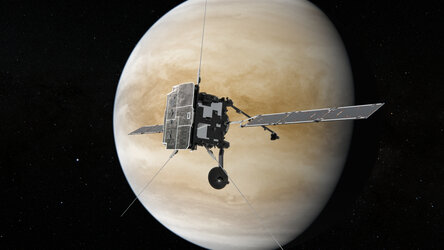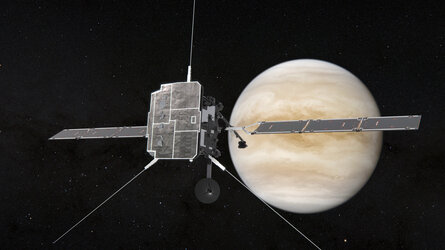
Solar Orbiter flyby of Venus
Visualisation of ESA's Solar Orbiter spacecraft flying by Venus. The spacecraft will make numerous gravity assist flybys at Venus to bring it closer to the Sun and to tilt its orbit in order to observe our star from different perspectives. The first takes place 27 December 2020.
Solar Orbiter’s path around the Sun has been chosen to be ‘in resonance’ with Venus, which means that it will return to the planet’s vicinity every few orbits and can again use the planet’s gravity to alter or tilt its orbit. Initially Solar Orbiter will be confined to the same plane as the planets, but each encounter of Venus will increase its orbital inclination. By 2025 it will make its first solar pass at 17º inclination, increasing to 33º by the end of the decade, bringing even more of the polar regions into direct view. This will result in the spacecraft being able to take the first ever images of the Sun’s polar regions, crucial for understanding how the Sun ‘works’, for investigating the Sun-Earth connection and how we can better predict periods of stormy space weather.
Solar Orbiter is an international collaboration between ESA and NASA.






